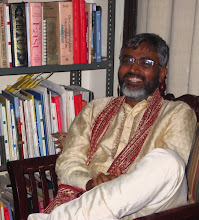Despite less popular nomenclature, the Middle East developments have more far-reaching implications for India than commonly recognised. The region normally is noticed for all wrong reasons or only for wrong reasons; terrorism in Israel, Iraq and Algeria; Islamic upsurges in Egypt, Yemen; threats emanating from the Somali pirates to oil supplies from the Persian Gulf; political instability in Lebanon; or the nagging and seemingly endless nuclear controversy over Iran. Occasionally elections get attention in the Indian media.
Yes, the Middle East has its share of problems but it also offers a number of challenges and opportunities. Since the end of the Cold War the world has become complex and New Delhi is still learning to maintain close and friendly ties with countries, which are at competition, if not war, with one another. This is especially true for the Middle East.
No country would be able to remain indifferent to the impending fallout of the eventual American withdrawal from Iraq. Likewise, New Delhi would not be able to pursue closer ties with Tehran without worrying about the US factor. Its newly found bonhomie with Israel would have to factor in the cold winds from Cairo. Its overall energy security calculations would have to consider the growing Chinese presence and competition in the oil-rich Gulf region. It is no accident that Iran has been using the China angle to force India’s hands on the never-ending negotiations over the Iran-Pakistan-India gas pipeline. Its closer military ties with the Jewish state have a bearing on India’s ties with as diverse a group as Egypt, Iran, Palestinians and of late Turkey.
Besides the geographic proximity and long political interactions, the region is important for a host of reasons. First, the Middle East is India’s prime trading partner. In 2007-08, it accounted for nearly 25 per cent of India’s total trade. Exports to this region stood at over $30 billion while imports stood at close to $72 billion. While the ongoing recession reduced the quantum of trade, the Middle East’s share in India’s overall foreign trade is unlikely to dwindle.
Second, a better picture of the region emerges in the energy sector. The region accounts of bulk of energy imports. Out of the $86 billion energy imports in 2007-08, as much as $58.8 billion came from the hydrocarbon-rich Middle East, with the Gulf region accounting for the lion’s share. Countries such as Saudi Arabia and UAE meet bulk of India’s energy needs. As India’s energy import dependency is expected to reach close to 90 per cent by 2025, the importance of the Middle East will only increase in the coming years.
Third, one need not overemphasise the role played by the expatriate population. Currently there are over four million Indian labourers in the Gulf and even without the hawala channel they contribute substantially to their families back home as well as to the Indian economy.
Fourth, Islam plays an important role in India’s ties with the Middle East. Even though most of the global Muslim population lives outside the region, the Middle East has become synonymous with the term ‘Islamic world’. The latest report by the Washington-based Pew Forum on Religion and Public Life identifies India as having the third largest community of Muslims after Indonesia and Pakistan. Any upheavals and progress in the Middle East naturally reverberates worldwide. If al-Qaeda has negative implications, the inter-faith dialogues pursued by Qatar and Saudi Arabia for example highlight the growing awareness in the region for better and nuanced understanding of one another. The Middle East mainstream is still moderate and needs to be befriended and encouraged.
Despite these factors, the Middle East does not figure adequately in India’s foreign policy agenda. The high-profiled visit by King Abdullah of Saudi Arabia during the Republic Day celebrations in 2006, for example, was not followed up adequately. The reciprocal visit by Prime Minister Manmohan Singh to Riyadh is plagued by delays. There is also pending invitations from Israel, Iran and other countries of the region. Singh’s visit to Egypt earlier this year, which subsequently became controversial due to the Sharm el-Sheikh statement, was not a state visit as he was attending the Non-Aligned Summit hosted by President Hosni Mubarak.
The South Asian countries are becoming vital primarily because of the negative consequences. As we have seen, domestic instability and violence in Bangladesh, Pakistan, Nepal and Sri Lanka often spill over into India. The Middle East on the contrary offers a number of incentives, opportunities and challenges.
Let there be no mistake. India’s great power aspirations will be tested in the Middle East. In the coming years, much of the great power rivalry involving the US, Russia, China and Japan will be fought over this region and its energy resources. The region will inevitably figure in India’s simmering discontent with the Obama administration over issues such as non-proliferation. The real implications of its energy cooperation or potential competition with China will be tested in the Gulf region. The maturity of its foreign policy establishment will be measured by how it handles the India-Israel-Iran and India-Iran-US triangles.
The time has thus come for a serious, nuanced and non-partisan understanding of the Middle East and its complexities. Erstwhile platitudes, historic bonhomie and civilisational rhetoric are important but would be insufficient to handle present dynamics and future challenges. The Middle East Institute @ New Delhi is a small step in this direction.
(The author teaches at Jawaharlal Nehru University and is the honorary director of the Middle East Institute @ New Delhi. This commentary is published in partnership with www.mei.org.in)
For web version please click here
